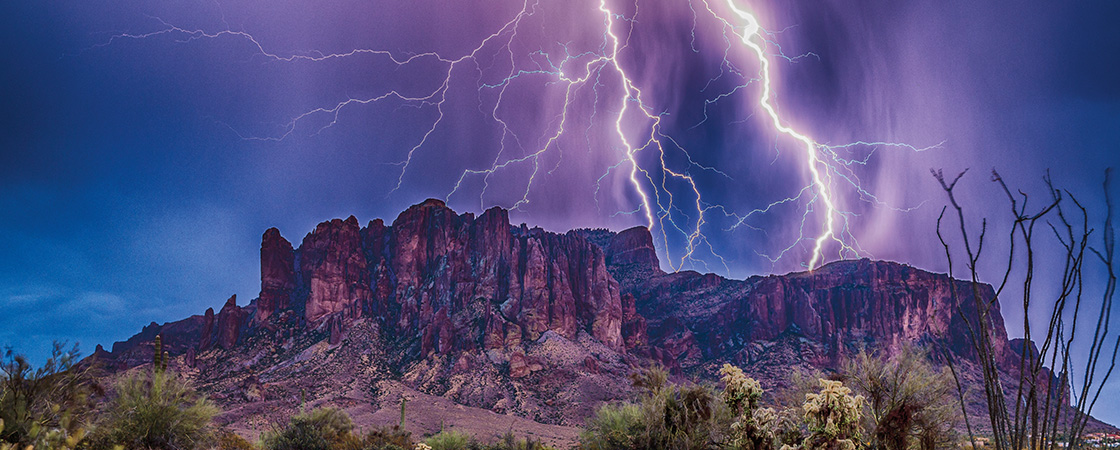“Don’t do it!”
“You should turn back.”
“The mountain is too dangerous.”
These are the warnings the locals gave you as you approached Superstition Mountain. And now these unsettling words are echoing in your mind as you climb through boulders and brush on a narrow, twisting trail.
On your way, you catch glimpses of petroglyphs—drawings of animals and symbols that were carved into the rocks more than 1,000 years ago. But you can’t risk taking too long a look. One wrong move, and you could plummet off a cliff or tumble into a gorge. Then you would never reach your goal: the Lost Dutchman’s Mine. It’s said to be one of the richest gold mines in the entire United States.
But does the mine even exist? Many have died trying to find out. Others have simply vanished.
As you climb Superstition Mountain under the burning desert sun, you are climbing into history—into a past of miners and murderers, grit and greed, daring and danger. Only one thing is certain: You will be lucky to make it out alive.
"Don’t do it!”
“You should turn back.”
“The mountain is too dangerous.”
These are the warnings the locals gave you as you approached Superstition Mountain. And now these warnings are echoing in your mind as you climb through boulders and brush on a narrow, twisting trail.
On your way, you catch glimpses of petroglyphs—drawings of animals and symbols. They were carved into the rocks more than 1,000 years ago. But you can’t risk looking for too long. One wrong move, and you could plummet off a cliff. You could tumble into a gorge. Then you would never reach your goal: the Lost Dutchman’s Mine. It’s said to be one of the richest gold mines in the entire United States.
But does the mine even exist? Many have died trying to find out. Others have simply vanished.
As you climb Superstition Mountain under the burning desert sun, you are climbing into history—into a past of miners and murderers, grit and greed, daring and danger. Only one thing is certain: You will be lucky to make it out alive.

